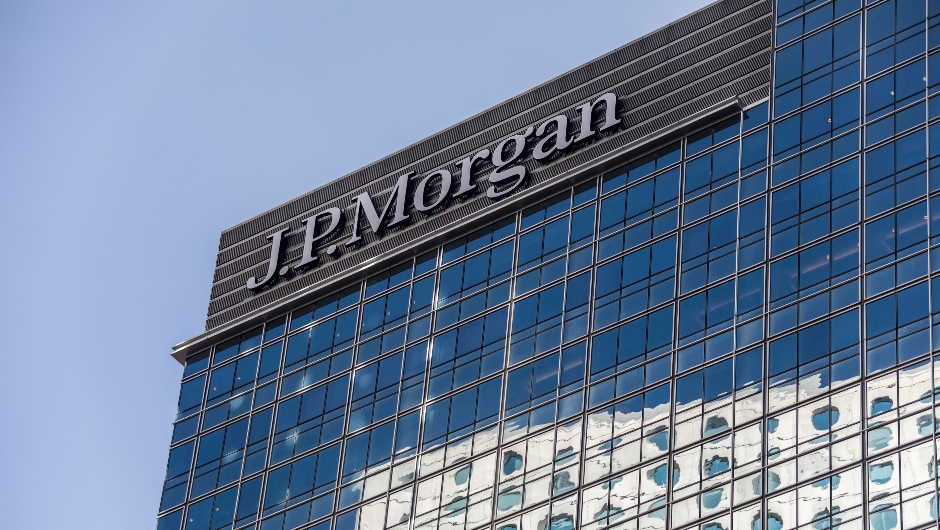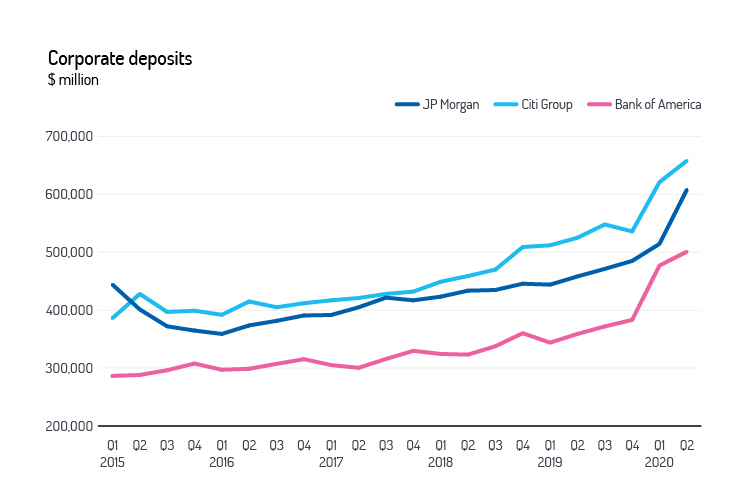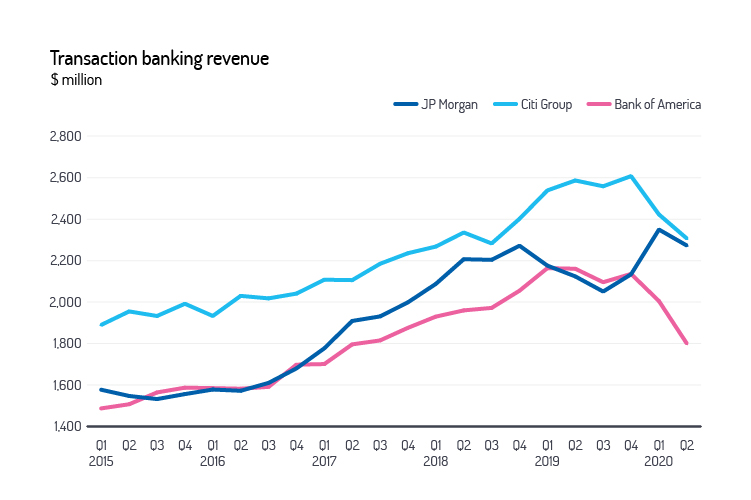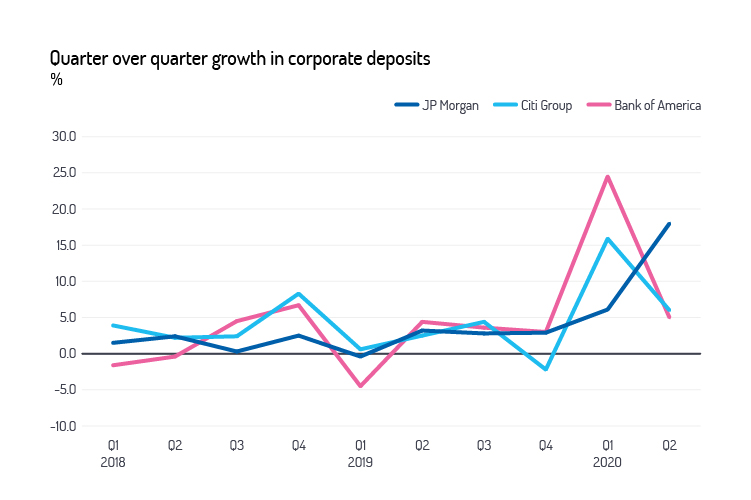Corporates placed $93bn cash at JP Morgan in Q2 amid flood of bond and equity issuance

JP Morgan saw record corporate deposit inflows in Q2, as treasurers switched from ‘panic’ loan drawdowns in favour of equity and debt capital markets to build liquidity.
Corporates are continuing to build vast cash piles as a cushion for an uncertain post-Covid future, second quarter filings from large US banks show. But the funding source of this deposit growth is changing as corporates switch from loan facilities to capital markets in the form of equity and debt issuance.
In Q2 2020, JP Morgan received $93.4 billion in deposits from its corporate clients. This is $32 billion more than Citigroup and Bank of America collectively received in the same period. Citigroup and Bank of America saw corporate deposit inflows of $37 billion and $23 billion respectively.

“We saw record levels of debt and equity issuance in the quarter as clients bought to pay down the majority of the revolver draws for March and continued to shore up liquidity while market conditions were receptive”, JP Morgan CFO Jennifer Piepszak said on an investor call. “May and June together were our two busiest months for equity issuance ever”.
JP Morgan in Q2 had earned record equity underwriting fees of $977 million compared to $331 million in Q1 which is 195% higher, similarly in debt underwriting, it earned the fees of $1.2 billion in Q2, up by 18% from Q1.
Bank of America earned $2.2 billion investment banking fees from advisory, debt and equity underwriting fees while Citigroup earned $491 million from equity underwriting in Q2 up from $180 million in Q1 and in debt underwriting it earned $1,039 million up from $788 million in Q1 2020.
Discussing the change in funding activity, Bank of America CEO Brian Moynihan said: “We’ve seen a massive amount of commercial line draws in mid-March to mid-April and loan requests out of panic and the need to create instant liquidity,” he told investors, and noted that the trend was now in reverse: “Repayment of Q1 draws built significantly as the quarter progressed”.
In the first quarter of 2020, JP Morgan, Bank of America and Citigroup collectively received $208 billion from their corporate clients in the form of deposits. The cash war chest building was evident when top 30 companies on the S&P 500 index as ranked by their amount of investment holdings at the end of 2019 had raised $81 billion and drew down on loans to prepare for the Covid-19 pandemic. In the same period, these top 30 companies saw a decline of $36 billion in their bond holdings.
The surge in bank deposits this year led to a decline in transaction banking revenue. Bank of America saw a decline of 10% in its global transactional revenue while JP Morgan in wholesale payments saw a decline of 3% and Citigroup in its treasury and trade solution saw a decrease of 5% in Q2 compared to Q1 2020.
All the three banks have seen two straight quarterly declines in their transactional revenue from the start of 2020.

“While treasury and trade solutions continued to be impacted by the lower rate environment, we did see good client engagement and strong deposit growth in that business,” said Michael Corbat, Chief Executive Officer at Citigroup.
Overall, the bank deposit growth quarter over quarter in JP Morgan touched double-digits for the first time since Q3 2015. The growth at Citigroup and Bank of America was 6% and 5% respectively. The deposit growth in JP Morgan, Citigroup and Bank of America of $362 billion in the first half of 2020 is equal to the collective rise in deposits in the past 15 quarters.

